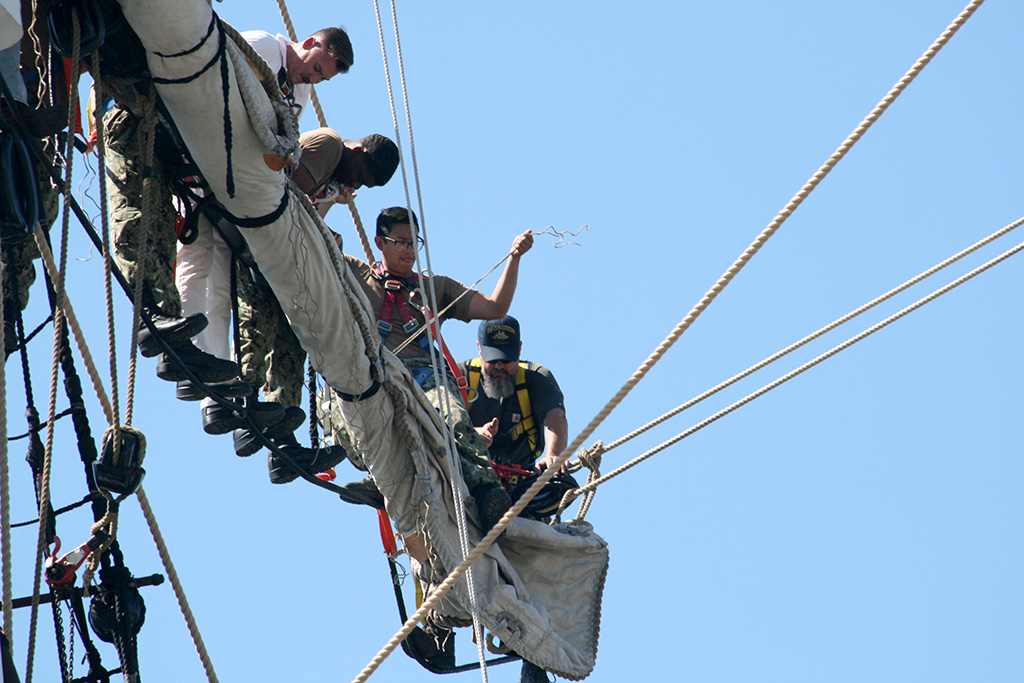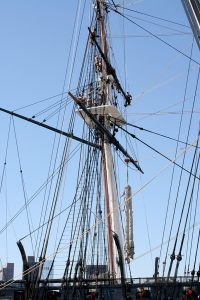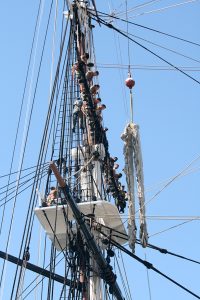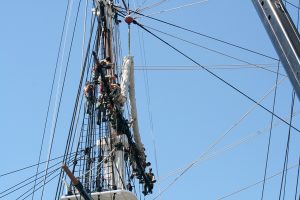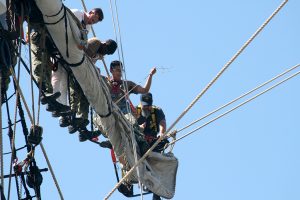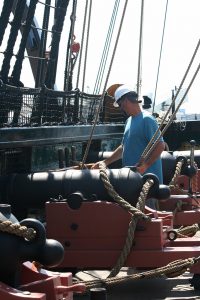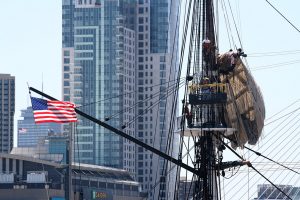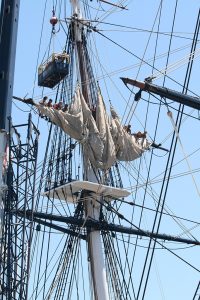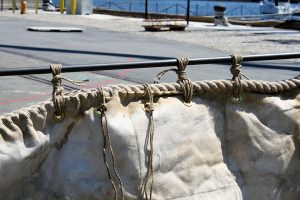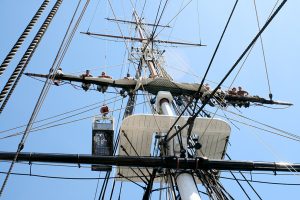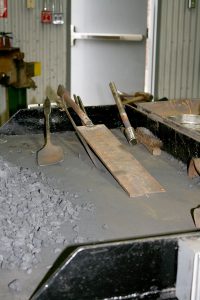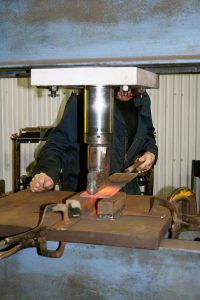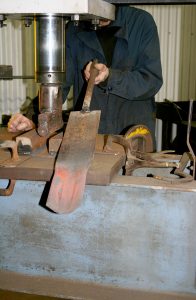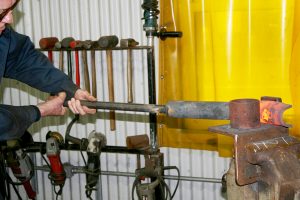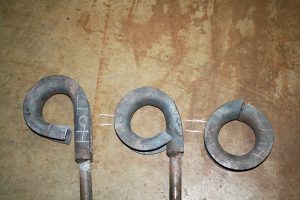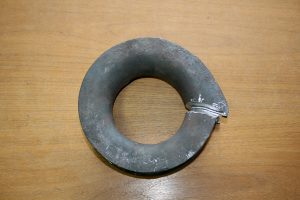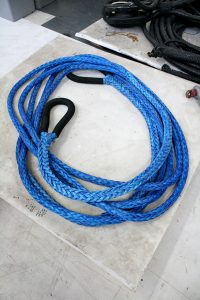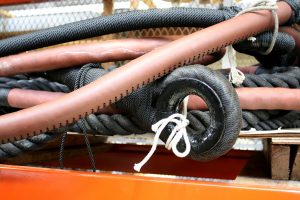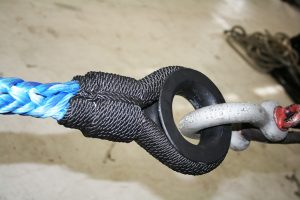Happy Anniversary, “Old Ironsides”!
July is a multiple-anniversary month for USS Constitution:
- The 44-gun frigate began her first cruise the evening of July 22, 1798, under ideal sailing conditions:
Steady Breezes fine & Pleasant Weather. At 8 P.M. Took my departure from Boston Light. [Samuel Nicholson, first captain of USS Constitution, as quoted in A Most Fortunate Ship, Tyrone G. Martin]
- Between July 16th and 19th, 1812, Constitution made her great escape from a squadron of five British warships in the opening days of the War of 1812.

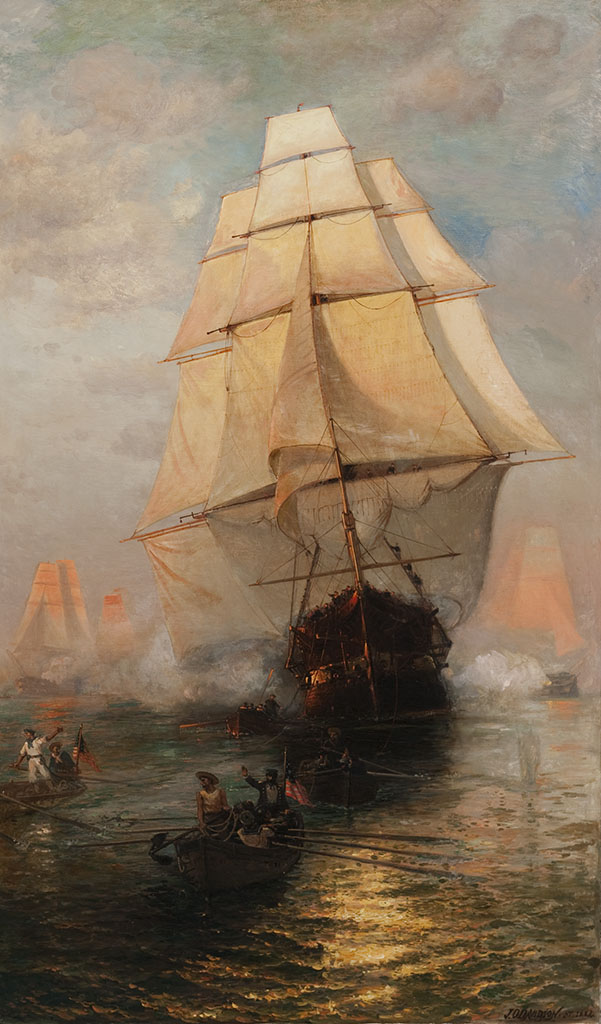
USS Constitution Escaping from the British, July 1812, by J. O. Davidson, 1884. [USS Constitution Museum Collection]
The daring escape by Captain Isaac Hull and his crew garnered not only the respect of their fellow U.S. Navy officers and sailors, but that of the Royal Navy as well. Lieutenant Oliver Hazard Perry noted to Secretary of the Navy Paul Hamilton later in July:
“It affords me the greatest pleasure to communicate to you Sir, the testimony all bear who witnessed Capt Hull’s conduct when chased by the English Squadron[;] to use the language of the Masters who were onboard of the different English ships at the time – ‘it was elegant’ – they say also, that neither of British frigates dare approach [Hull and Constitution] seperately [sic].” [Oliver Hazard Perry to Paul Hamilton, 26 July 1812, as reprinted in The Naval War of 1812, A Documentary History, Volume 1]
The “legend” of USS Constitution had begun.
- Old Ironsides” made 20th century history on July 21, 1997, when she sailed, in honor of the 200th anniversary of her launch, for the first time in 116 years.
And, just one year ago, on July 23rd, America’s Ship of State returned to the waters of Boston Harbor when she was re-floated from Dry Dock 1.


So we take this notable month in “Old Ironsides'” long history to bring to a close the unfolding story of Constitution‘s 2015 – 2017/18 restoration. If you have been a faithful reader of this blog, you will have followed the ship’s entry into the Charlestown Navy Yard’s historic Dry Dock 1 on May 18, 2015, the different restoration projects including the cutwater, waterways, hull planking, quarter galleries, and copper sheathing, and the re-float on July 23, 2017. “Old Ironsides'” first 21st century dry docking was a success.
Now, we will finish the restoration with the stories of the last big projects that make Constitution once again look like the War of 1812 icon that she is.
Did you ever wonder if the phrase, “the whole nine yards” was a nautical term? According to Fred Shapiro, editor of the Yale Book of Quotations, in an article he wrote for the Yale Alumni Magazine, the earliest variations of the quote can be traced to two articles in the Mount Vernon (Kentucky) Signal in May and June, 1912. Neither instance had anything to do with the maritime world. So, what do we mean when we say “the whole thirteen yards” when referencing USS Constitution? Actually, according to sailmaker Charles Ware’s 1817 sail plan of Constitution (see below), the ship could carry up to sixteen yards! However, thirteen was the more usual number of yards (horizontal spars) that were set up for the square sails and rigging on “Old Ironsides.”
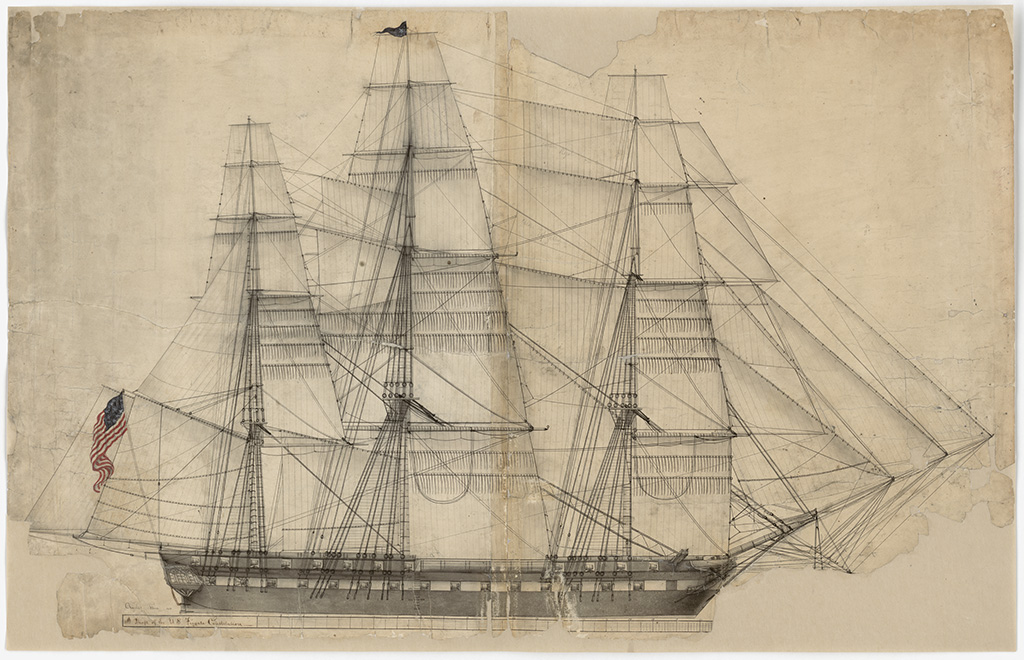

You will notice in the photograph of Constitution below, taken in mid-June, the ship is currently rigged with four yards on each of the three masts. On the fore and main masts, the yards are (bottom to top): fore/main course or yard, fore/main top yard, fore/main topgallant yard, and fore/main royal yard. On the mizzen (aftermost) mast, the yards have slightly different names and uses than on the fore and main masts. On the mizzen, the spars are (bottom to top): cross-jack yard (commonly pronounced “crojack” and neither “mizzen” nor “yard” are used as denominators as there is no other crojack on the vessel), mizzen top yard, mizzen topgallant yard, and mizzen royal yard. On the bowsprit (the multi-sectioned spar that is set at an angle from the bow), the spritsail yard is suspended. Of the thirteen yards on Constitution, neither the spritsail yard nor the crojack ever carried sails in the ship’s career.
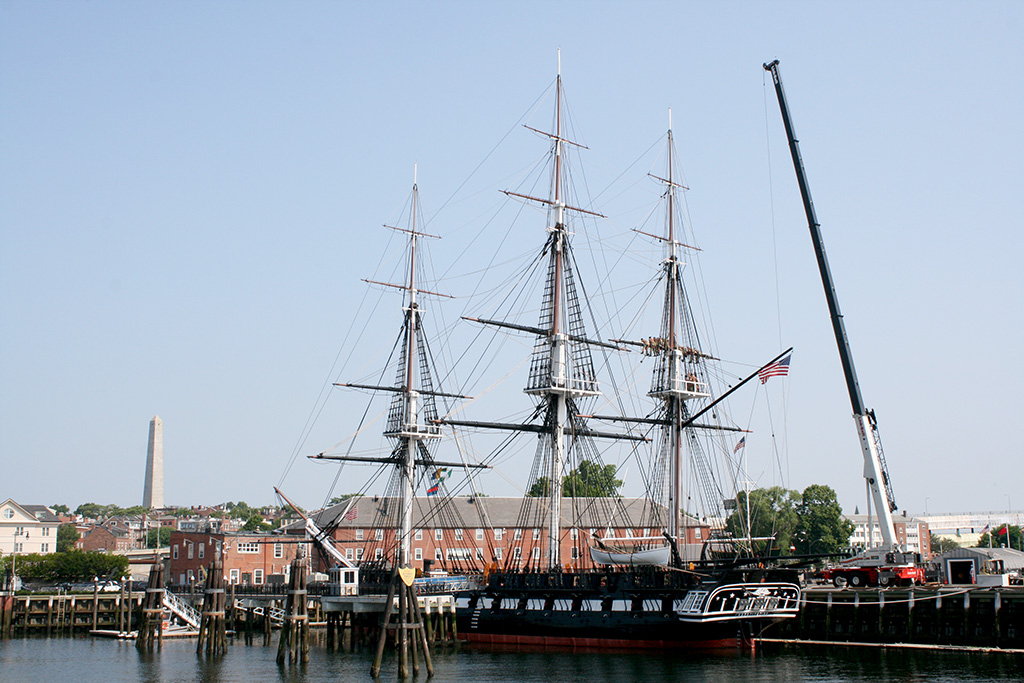

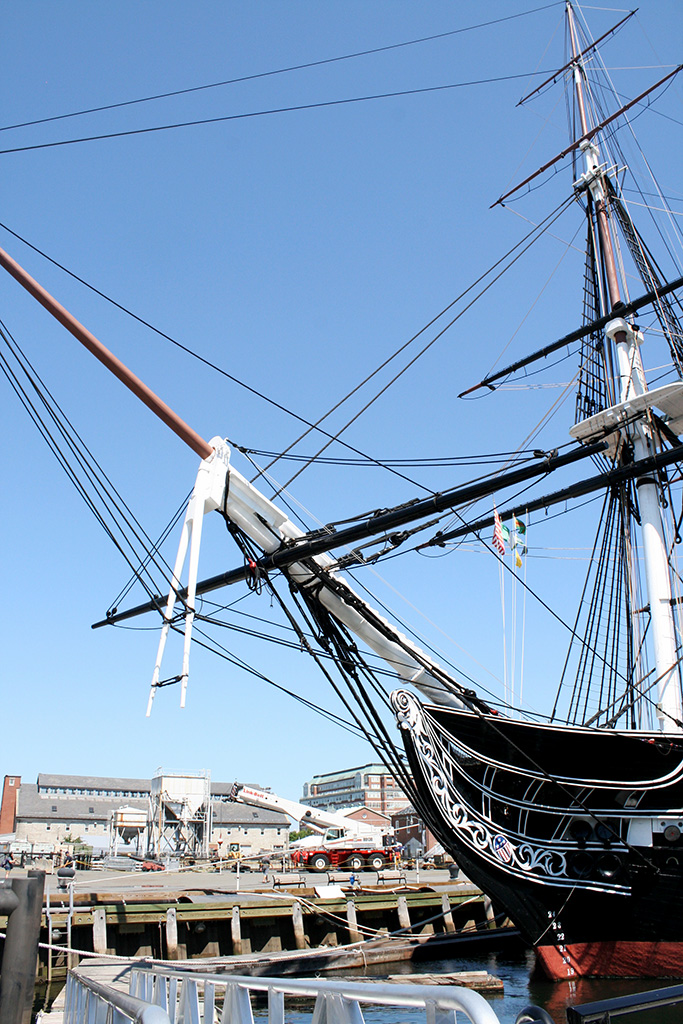

Constitution‘s crojack was the first yard installed on the ship as her up-rigging got underway in April 2018. Like the spritsail yard, it didn’t and doesn’t carry sail – instead, this horizontal spar is used as a spreader to which the foot (bottom) of the mizzen top sail is sheeted home and to carry running rigging from the main mast.
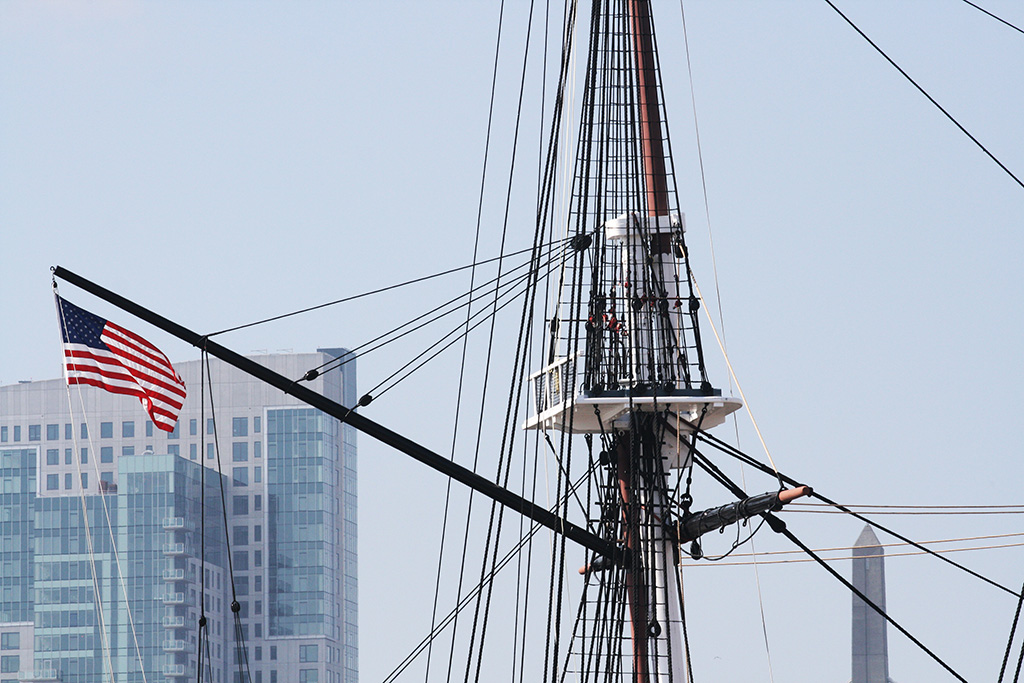

The gallery of photographs that follows is a sequence taken on June 26, 2018, when Naval History & Heritage Command Detachment Boston riggers and USS Constitution sailors bent on the sail to the mizzen top yard – the mizzen topsail. Even though the mizzen topsail is the smallest of the three topsails, it still took a dozen people to attach the sail to the yard. All of Constitution‘s modern sails are made from Oceanus, a Dacron fibre. The sail was prepped in the NHHC Detachment Boston rigging loft, so that when the sail was hoisted, it was oriented properly to the yard. Small lines, originally called “rope bands” (pronounced “robins” according to Falconer’s 1815 New Universal Dictionary of the Marine), known as “robands” today, are looped through brass grommets (reinforced holes) in the top edge or head of the sail; the robands are then tied around the “jack-stay”, an iron rod that is fastened to the top of yard. The sail’s robands are tied to the jack stay and the sailors can use the jack stay as a safety hold while aloft. [All photos by Naval History & Heritage Command Detachment Boston]
New and different synthetic rope/line has been introduced to “Old Ironsides'” rigging in the 2015 restoration. For rigging the yards, the Detachment Boston riggers switched from steel cable and polyester to Dyneema® for slings. The extra strength of the high performance Polyethylene line and lighter weight are great advantages for the miles of rigging needed on “Old Ironsides”.


As part of Constitution‘s 2015 restoration, most of the standing rigging was removed for inspection, overhaul, and replacement. Several of the yard slings and lifts (supports) which were either steel cable or Polyester were replaced with Dyneema®. Along with replacing the line, metal “thimbles” which help to hold the hardware of the rigging needed to be completely replaced. The pressure of the rigging was so great on some of the thimbles that they were mis-shaped and needed to be completely replaced.
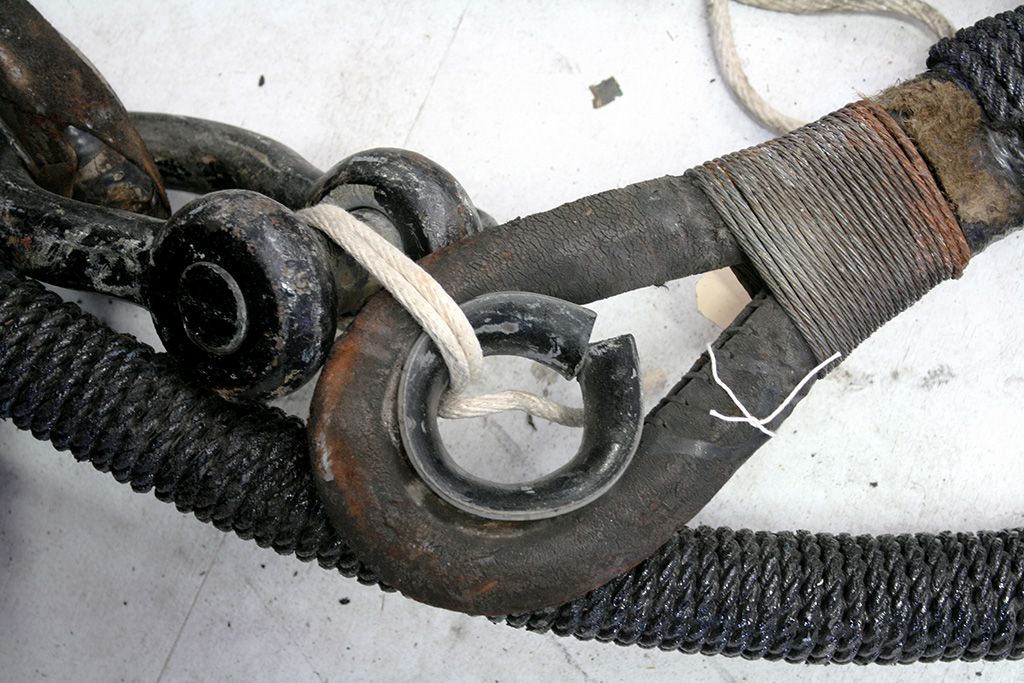

USS Constitution‘s running rigging has been a fibrillated polypropylene since the 1992 restoration. For the 2015 restoration up-rigging, P.O.S.H., a spun polyester, was being introduced for the braces for the yards. P.O.S.H. resembles real fibre line and has a great “hand”, or feel, of natural hemp rigging.
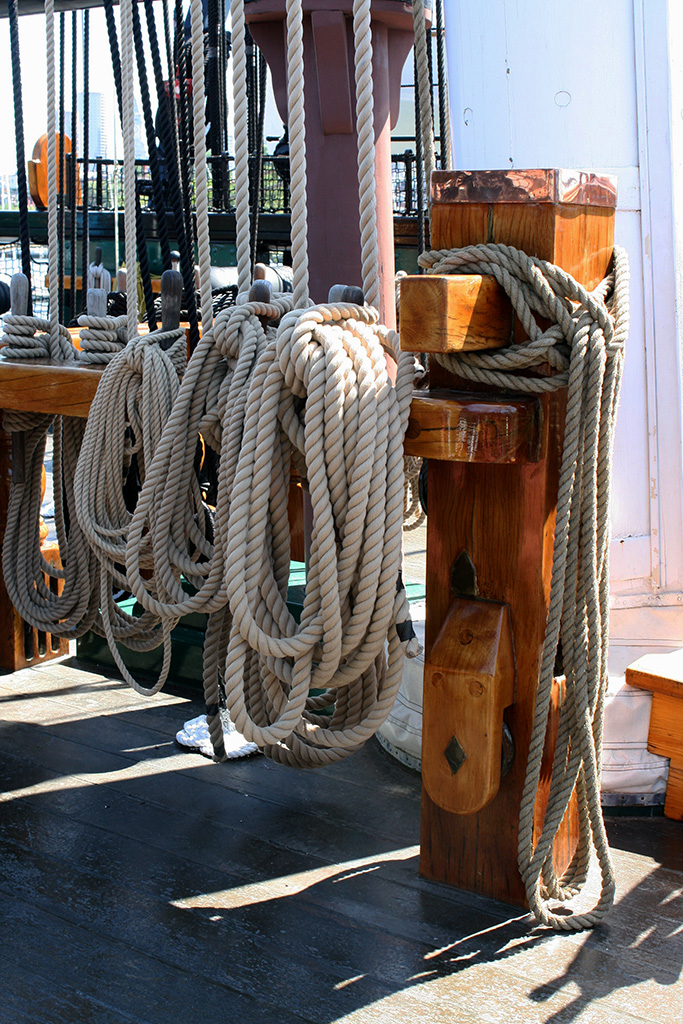

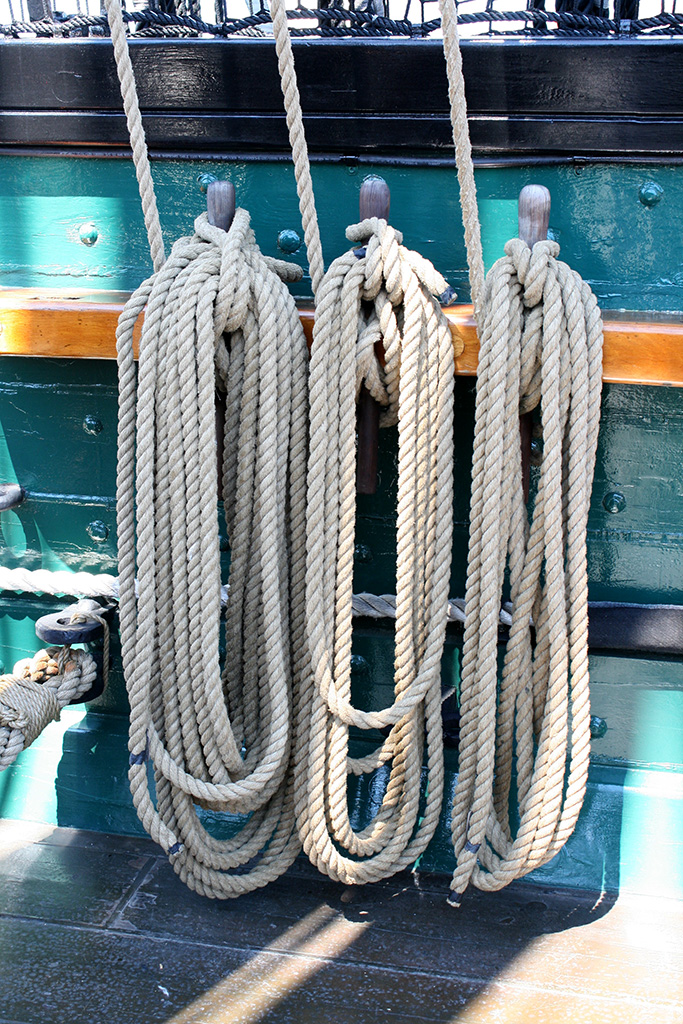

As has been discussed in previous restoration blog posts, work to maintain and preserve USS Constitution never actually stops. But, the larger tasks of 2015 restoration have been completed and “Old Ironsides” is back at Pier One, ready for another summer of welcoming visitors from all over the world. We hope you will have the opportunity to come to Boston and tour America’s Ship of State – soon!
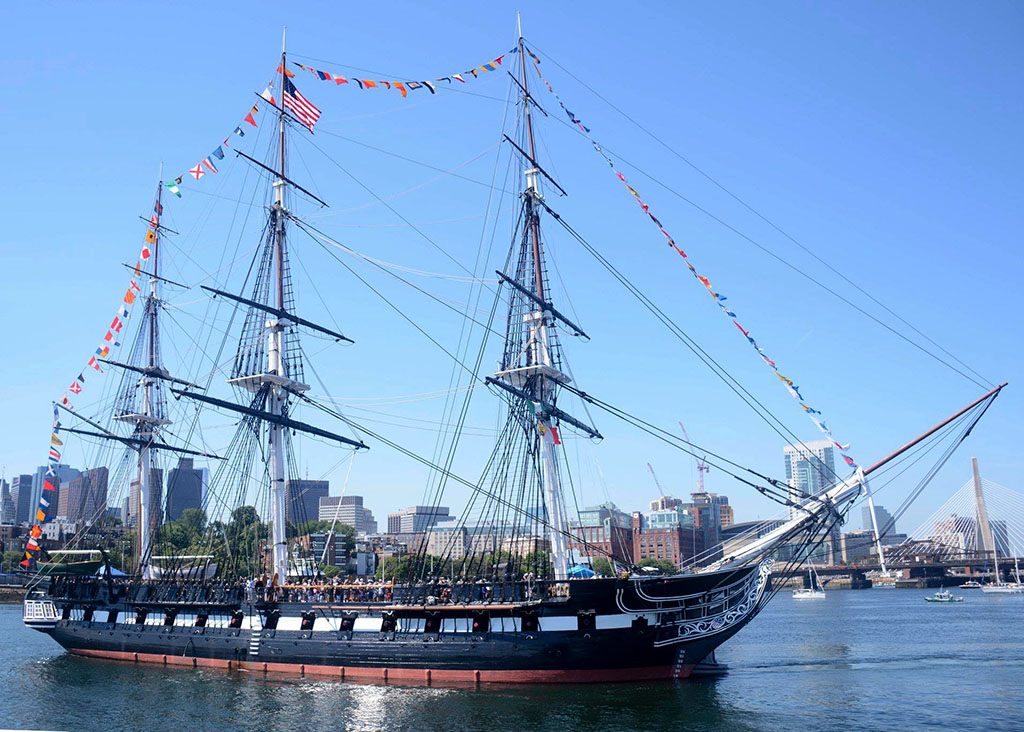

The Author(s)
Margherita Desy, Historian, Naval History and Heritage Command Detachment Boston
Historian, Naval History and Heritage Command
Margherita M. Desy is the Historian for USS Constitution at Naval History and Heritage Command Detachment Boston.
